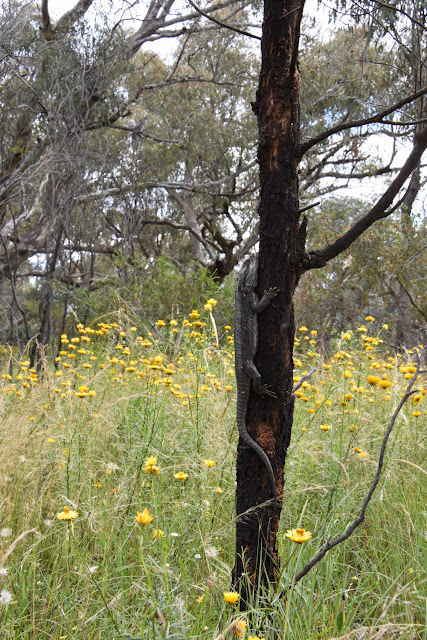Last frogmouth chicks of the year
A very large Tawny Frogmouth chick lies in its nest next to its father. The nest was set on the end of a broken branch. The chick is almost fully feathered, enough to fly, and it left the nest that evening. This was the second last chick to fledge in the Canberra study area this year, that I know of. It is the adult male who guards the chicks during the day.
The nest was set right above a popular walking and vehicle track on the edge of suburban Canberra.
This was the last chick I know of to fledge in the area this year, last week, mid-December. This family also nested on the edge of suburbia, and frogmouths are not the only woodland wildlife to be found close to houses. This Bearded Dragon was basking on the trunk of a small tree, trying to warm up on a cloudy morning. The frogmouths are on a branch in the top left.
Their grey plumage is in the same soft tone as the grey dead branch they are perched on. Tricky to see in grey light.
One final shot of a frogmouth chick in 2021. Once they fledge they are still dependent on their parents for food as they are still only half-grown. The family will disperse through the woodland and the fledglings will leave their parents territory by the end of summer.






























